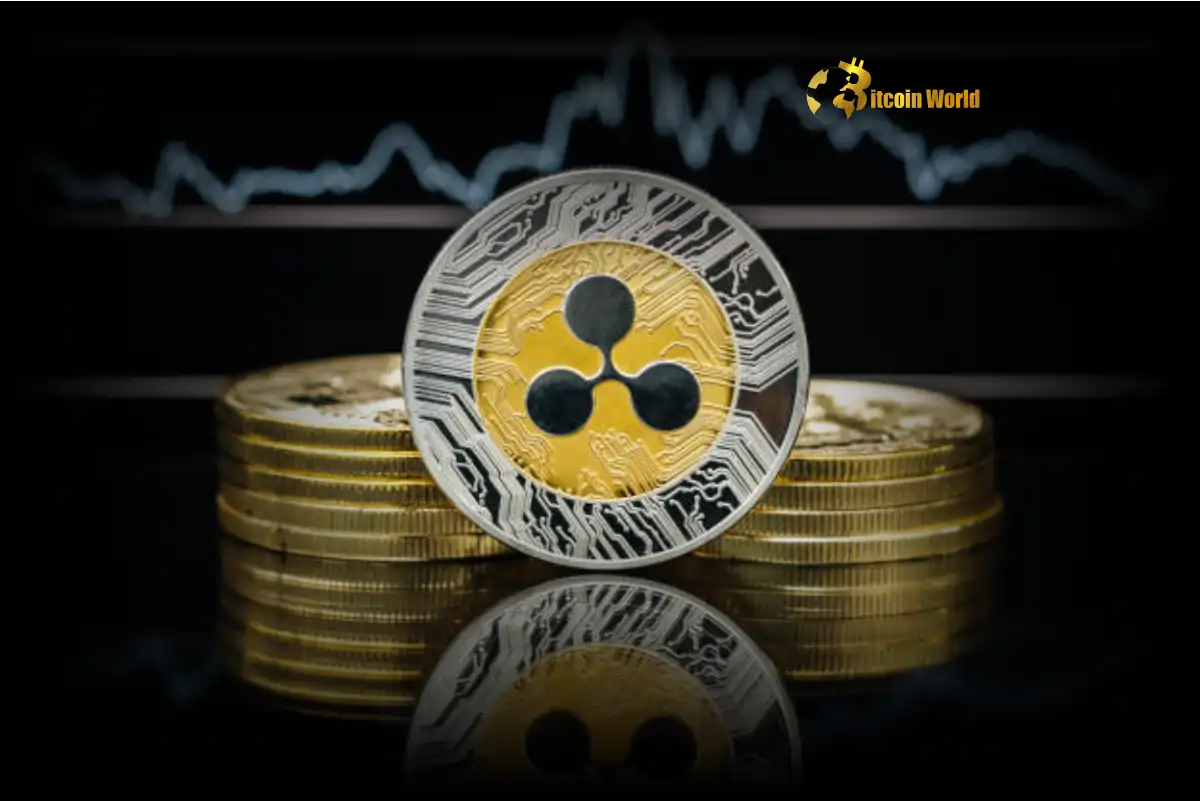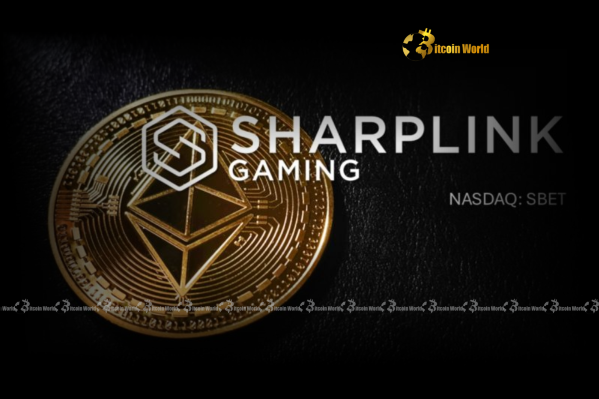BitcoinWorld

XRP Futures Debut on CME Sparks $1.5M Volume Excitement
The world of cryptocurrency trading is constantly evolving, with new avenues opening up for investors and traders to gain exposure to digital assets. A significant development recently occurred with the listing of XRP futures contracts on CME Group’s derivatives platform. This move marked a notable step in bringing one of the most discussed cryptocurrencies into the fold of traditional financial markets.
On their very first day of trading, these new XRP contracts registered a total trading volume of $1.5 million. While this figure might seem modest compared to the astronomical volumes seen in Bitcoin or Ethereum futures, it represents a crucial starting point for XRP within a major, regulated financial institution like CME.
What Does the Initial XRP Trading Volume on CME Tell Us?
The reported $1.5 million in total trading volume on the debut day provides an initial glimpse into the market’s appetite for regulated XRP exposure via futures. CoinDesk’s report highlighted the breakdown:
- Standard Contracts: Four standard contracts were traded. Each standard contract represents 50,000 XRP. This amounted to approximately $480,000 in notional volume.
- Micro Contracts: A larger number of micro contracts were active, with 106 traded. Each micro contract represents 2,500 XRP. These contributed over $1 million in total additional volume.
The fact that micro contracts saw significantly higher activity (106 vs 4) suggests that smaller institutional players or potentially sophisticated individual traders (accessing via institutional brokers) are exploring this new instrument. Micro contracts require less capital commitment per contract, making them more accessible for managing risk or taking smaller speculative positions compared to the larger standard contracts.
Why is CME Listing XRP Futures Significant for Institutional Trading?
CME Group is one of the world’s leading derivatives marketplaces, offering a wide range of futures and options contracts across various asset classes, including interest rates, equities, foreign exchange, commodities, and now, cryptocurrencies. Their existing crypto offerings, primarily Bitcoin and Ethereum futures and options, are widely used by institutional participants seeking regulated ways to trade crypto price movements without directly holding the underlying assets.
The listing of XRP futures on such a platform is significant for several reasons, particularly concerning institutional trading:
- Regulatory Environment: Trading on CME provides a regulated environment that many large institutions require before participating in a market. This can alleviate concerns about counterparty risk and market manipulation often associated with less regulated crypto exchanges.
- Accessibility: It integrates XRP exposure into existing institutional trading workflows and platforms that are already connected to CME. This makes it easier for banks, hedge funds, and asset managers to access and trade XRP derivatives.
- Hedging Opportunities: Institutions holding physical XRP can now use CME futures to hedge their price risk effectively within a familiar and regulated framework.
- Price Discovery: A regulated futures market can contribute to more robust and transparent price discovery for XRP, potentially influencing spot market prices.
While the initial volume is a starting point, the presence of XRP on a platform like CME signals increasing mainstream acceptance and provides a crucial gateway for traditional finance to interact with the asset.
Understanding Crypto Derivatives: Futures Explained
For those new to the concept, crypto derivatives are financial contracts that derive their value from the price of an underlying cryptocurrency, in this case, XRP. Futures contracts are a specific type of derivative where two parties agree to trade an asset at a predetermined price on a specific date in the future.
Here’s a simplified breakdown:
- The Contract: It’s an agreement, not the actual asset itself.
- The Underlying Asset: XRP is the asset whose price determines the value of the future.
- Expiration Date: The contract has a set date when it expires.
- Predetermined Price: The price at which the trade will occur on the expiration date is agreed upon when the contract is opened.
Traders use futures for two primary purposes:
- Speculation: Betting on the future price direction of XRP. If a trader believes XRP’s price will rise, they might buy a futures contract (go long). If they believe it will fall, they might sell a futures contract (go short).
- Hedging: Protecting against potential price drops if they hold XRP, or protecting against potential price increases if they need to buy XRP in the future.
CME’s XRP futures are cash-settled, meaning that upon expiration, no actual XRP changes hands. Instead, the difference between the contract price and the market price is settled in cash (likely USD), making it simpler for traditional institutions that may not want to handle the complexities of storing and transferring actual cryptocurrencies.
Comparing XRP Futures Volume to Other CME Crypto Launches
To put the initial $1.5 million XRP trading volume into perspective, it’s useful to look at the debut of other crypto futures on CME. When Bitcoin futures launched on CME in December 2017, the initial volume was around $60 million in the first week, with day-one figures not as readily comparable due to different market conditions and reporting standards at the time. Ethereum futures, which launched in February 2021, saw significantly higher initial volume, reportedly reaching over $30 million on their first day.
While XRP’s debut volume is lower than that of Bitcoin or Ethereum on CME, several factors could explain this:
- Market Cap and Liquidity: Bitcoin and Ethereum have larger market capitalizations and generally higher trading volumes across global markets compared to XRP.
- Regulatory Context: XRP has faced unique regulatory challenges, particularly in the United States, which may make some institutions more cautious about engaging with the asset, even via derivatives on a regulated platform.
- Timing: The overall crypto market sentiment and institutional adoption landscape were different during the BTC and ETH futures launches compared to the current environment.
Therefore, while the initial volume is modest, it’s crucial to view it as a starting point. Volume on new derivatives contracts often grows over time as more participants become aware of the product and liquidity deepens.
What Are the Potential Benefits and Challenges of CME XRP Futures?
The introduction of XRP futures on CME brings both opportunities and considerations for the market.
Potential Benefits:
- Increased Institutional Participation: Provides a clear, regulated path for more institutions to gain exposure to XRP.
- Enhanced Market Sophistication: Introduces advanced trading strategies like basis trading, spreads, and complex hedging to the XRP market.
- Improved Price Discovery: A regulated futures market can contribute to more efficient and transparent pricing.
- Greater Legitimacy: Listing on a major exchange like CME lends further credibility to XRP as an asset class, despite its ongoing legal situation.
- Potential for Increased Liquidity: As volume grows, it can attract more participants, creating a more liquid market.
Potential Challenges:
- Initial Low Liquidity: Low initial volume can lead to wider bid-ask spreads and potentially larger price swings for large orders.
- Regulatory Uncertainty: The outcome of the ongoing legal case involving Ripple and the SEC remains a significant overhang for XRP, which could impact institutional sentiment and volume growth on CME.
- Complexity: Futures trading involves leverage and complex mechanics that are not suitable for all investors.
- Basis Risk: The price of the futures contract may not perfectly track the spot price of XRP, creating basis risk for hedgers.
Navigating these challenges while leveraging the benefits will be key for market participants.
Actionable Insights: What Does This Mean for You?
Whether you are an XRP holder, a crypto trader, or simply an observer of the market, the launch of XRP futures on CME offers several points to consider:
- For XRP Holders: This development could potentially lead to increased institutional interest and demand over time, which could positively impact the price. However, it also opens up regulated avenues for short-selling, which could add downward pressure. It’s a double-edged sword that increases market efficiency and access.
- For Experienced Traders: If you have access to platforms that offer CME futures trading, this presents a new market for speculation or hedging. Understand the contract specifications (standard vs. micro), margin requirements, and settlement process before trading. Consider how CME volume compares to volume on other platforms when assessing overall market sentiment.
- For Those New to Futures: The launch highlights the growing maturity of the crypto market but jumping into futures without understanding the risks, especially leverage, is highly cautioned against. Start by learning about derivatives and considering less complex forms of exposure if you are a beginner.
- Monitor Volume Growth: The initial $1.5M is just day one. Watch how the volume evolves over the coming weeks and months. Sustained growth in volume and open interest would be a stronger indicator of increasing institutional adoption and market health for XRP on CME.
This development underscores the ongoing convergence of traditional finance and the crypto world, creating new tools and opportunities, but also requiring careful consideration and risk management.
Conclusion: A Significant Step for XRP in Traditional Finance
The debut of XRP futures on CME Group, registering $1.5 million in initial trading volume, marks a noteworthy milestone for the XRP ecosystem. While the volume is relatively modest compared to the launch of Bitcoin or Ethereum futures on the same platform, it signifies XRP’s entry into a major, regulated derivatives marketplace preferred by institutional investors. The breakdown between standard and micro contracts offers insights into the types of participants currently engaging with the product.
This development provides new avenues for institutional trading, hedging, and price discovery for XRP. However, potential challenges related to initial liquidity and the lingering regulatory uncertainty surrounding XRP cannot be ignored. As the market matures, observing the growth in XRP trading volume and open interest on CME will be crucial indicators of increasing institutional confidence and participation.
Ultimately, the CME listing is a positive step towards broader acceptance and integration of XRP within traditional financial structures, opening doors for a wider range of market participants to interact with the asset in a regulated environment.
To learn more about the latest altcoin market trends, explore our articles on key developments shaping XRP news and institutional adoption.
This post XRP Futures Debut on CME Sparks $1.5M Volume Excitement first appeared on BitcoinWorld and is written by Editorial Team





